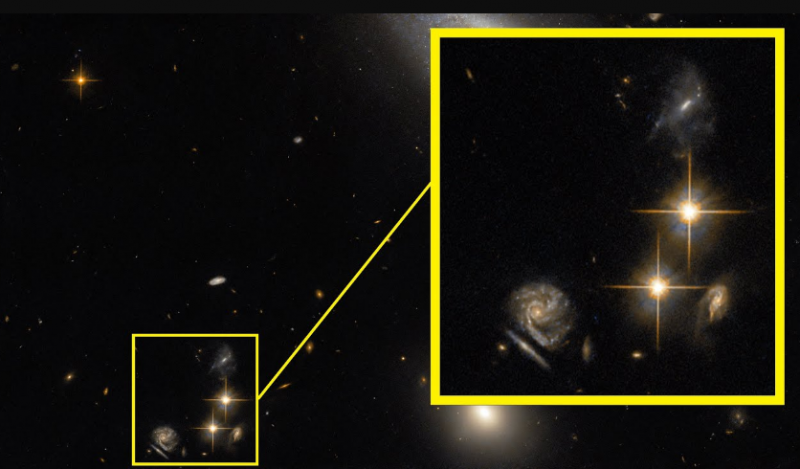
USA: In the most recent image from NASA's Hubble Space Telescope, a spiral galaxy known as NGC 298 takes centre stage. Only a few other galaxies and stars are visible in the area around the cosmic object, giving the impression that it is rather isolated.
NGC 298 was the site of a type 2 supernova explosion, one of "astronomy's most extreme events" despite its serene appearance. What is it then?
Astronomers have greatly benefited from the 1990 launch of the Hubble Space Telescope in their quest to comprehend the universe. Hubble, one of the first significant optical telescopes sent into orbit, has been operational for more than 33 years.
Also Read: In fact, Apple has integrated AI features into many of its products
The observatory continues to offer magnificent views of the cosmos from its current location, which is 535 kilometres above the surface of the planet.
The spiral galaxy is obliquely visible in the picture. The galaxy's core and disc are even more clearly visible due to this tilt. The galaxy's disc is littered with tiny stars and bubbles of bright, glowing gas, and its core is brightly glowing. Small galaxies and stars can be seen strewn across the shadowy background, but NGC 298 is the main attraction.
Also Read: Odisha Govt launches 'Odisha for AI, AI for Youth' initiative
Around 89 million light-years away from Earth, in the constellation Cetus, is the spiral galaxy NGC 298. This study made use of Hubble's onboard Advanced Camera for Surveys (ACS), which has the ability to see in ultraviolet, visible, and near-infrared light.
The investigation into the causes of Type 2 supernovae included Hubble observations of the spiral galaxy. What are they, though? Star explosions known as supernovae. According to NASA, it is the biggest explosion ever to occur in space.
Supernovae can occur in stars in two different ways. When stars run out of fuel and collapse due to their own gravity, type 2 events take place.
Some of a star's mass moves the core when the star runs out of fuel. The core eventually weighs so much that it is unable to resist the pull of gravity. Then it crumbles, resulting in a supernova.
The second type of supernova, Type 1, happens when a dying star gathers matter from a nearby star to the point where a nuclear reaction is triggered, resulting in an explosion.
Also Read: Why ethanol is the world's future fuel and what its benefits?
The brightness and other characteristics of Type 2 supernovae are thought to be caused by dust and gas that stars have stripped away from them. In the wake of several Type 2 supernovae, the Hubble telescope was used to study their remnants.
Astronomers anticipate learning more from these studies about the connection between supernovae and the stellar systems that produce them.